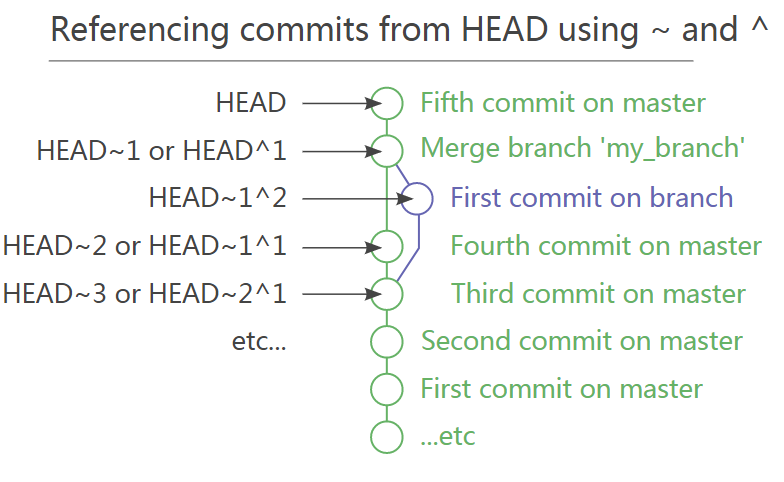I spent a little bit of time playing with Git today, specifically the way that the ^ (caret) and ~ (tilde) work and thought I'd document it here in case I forget.
The short version
If you want a deeper explanation skip down to "The long version".
ref~ is shorthand for ref~1 and means the commit's first parent. ref~2 means the commit's first parent's first parent. ref~3 means the commit's first parent's first parent's first parent. And so on.
ref^ is shorthand for ref^1 and means the commit's first parent. But where the two differ is that ref^2 means the commit's second parent (remember, commits can have two parents when they are a merge).
The ^ and ~ operators can be combined.
Here's a diagram showing how to reference various commits using HEAD as the starting point.

The long version
I've created a dummy repository with several commits in it.
|
Starting at the bottom, the early commits were made straight onto master.
The commits starting at 748855b and moving up to c7c2590 were made on a branch and merged into master, but no changes had been made on master in the mean time.
The commits a8fe411 and 956c87d were made on separate branches at the same time. They were merged together in commit f5717b0.
Finally, 8329384 was committed straight onto master.
We can use git show to look at individual commits.
You'll already know that HEAD points to the tip of the current branch:
|
Putting the caret symbol (^) next to a commit means the parent of that commit. So the following will show the parent of HEAD:
|
HEAD^ is shorthand for saying HEAD^1, which literally means show me parent 1 of that commit. You can also say HEAD^2 but in this instance it won't make any sense:
|
Because HEAD only has 1 parent.
But f5717b0, the point where the two branches were merged, has two parents, one on master and one on the branch:
|
The tilde symbol (~) works in a similar way. In fact HEAD~ will reference the same commit as HEAD^:
|
Again, HEAD~ is shorthand for HEAD~1, but here this means the first ancestor of HEAD – HEAD~2 is not the second parent of HEAD but the grandparent of HEAD:
|
As you can see, 956c87d Fourth commit on a branch is not visible when using the tilde operator. This is because the tilde operator always presumes you want to view the first parent's parent.
To access the second parent's parent the tilde and caret symbols can be combined:
|
In this way you should be able to reference any commit in your repository's history.